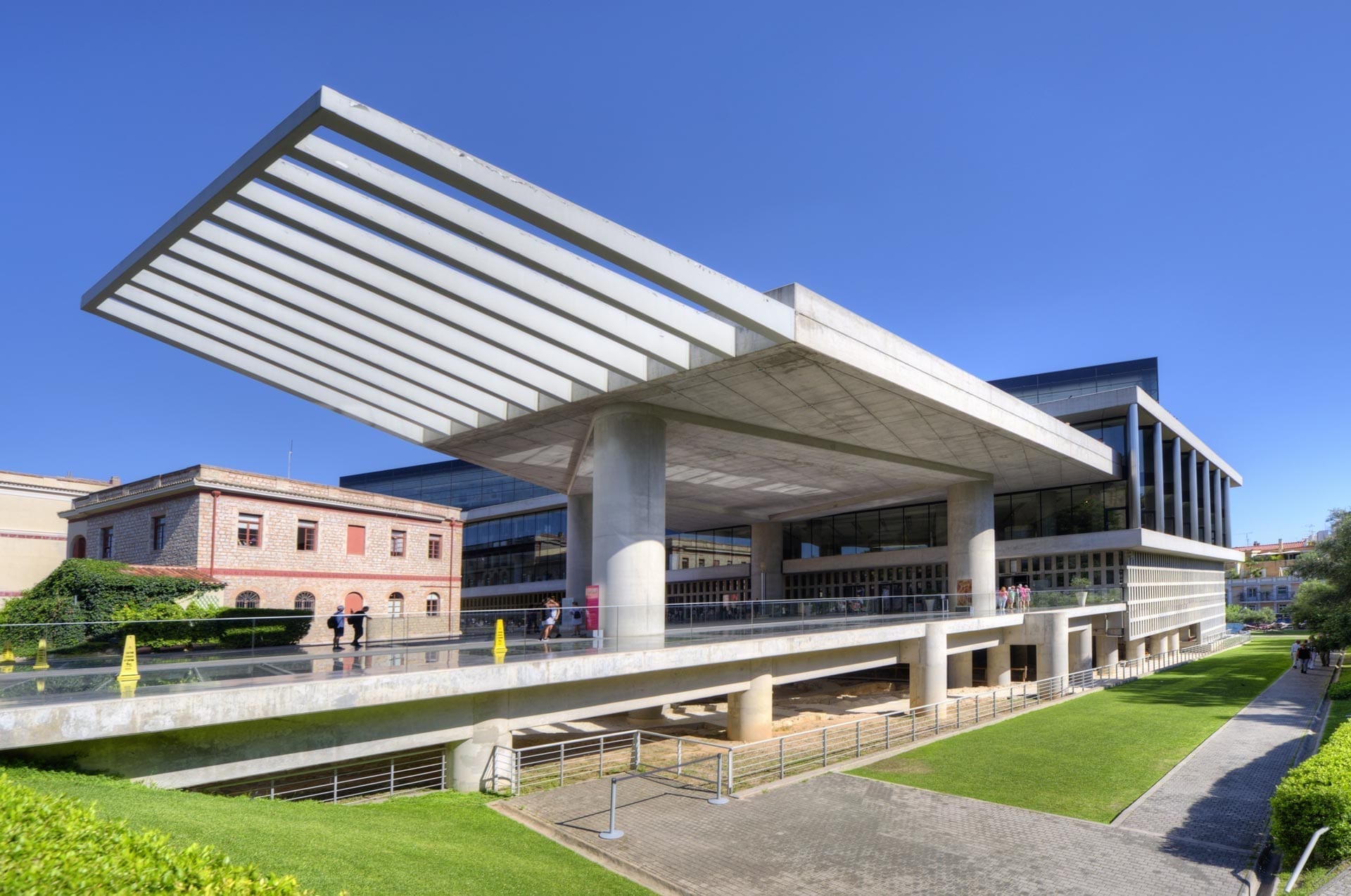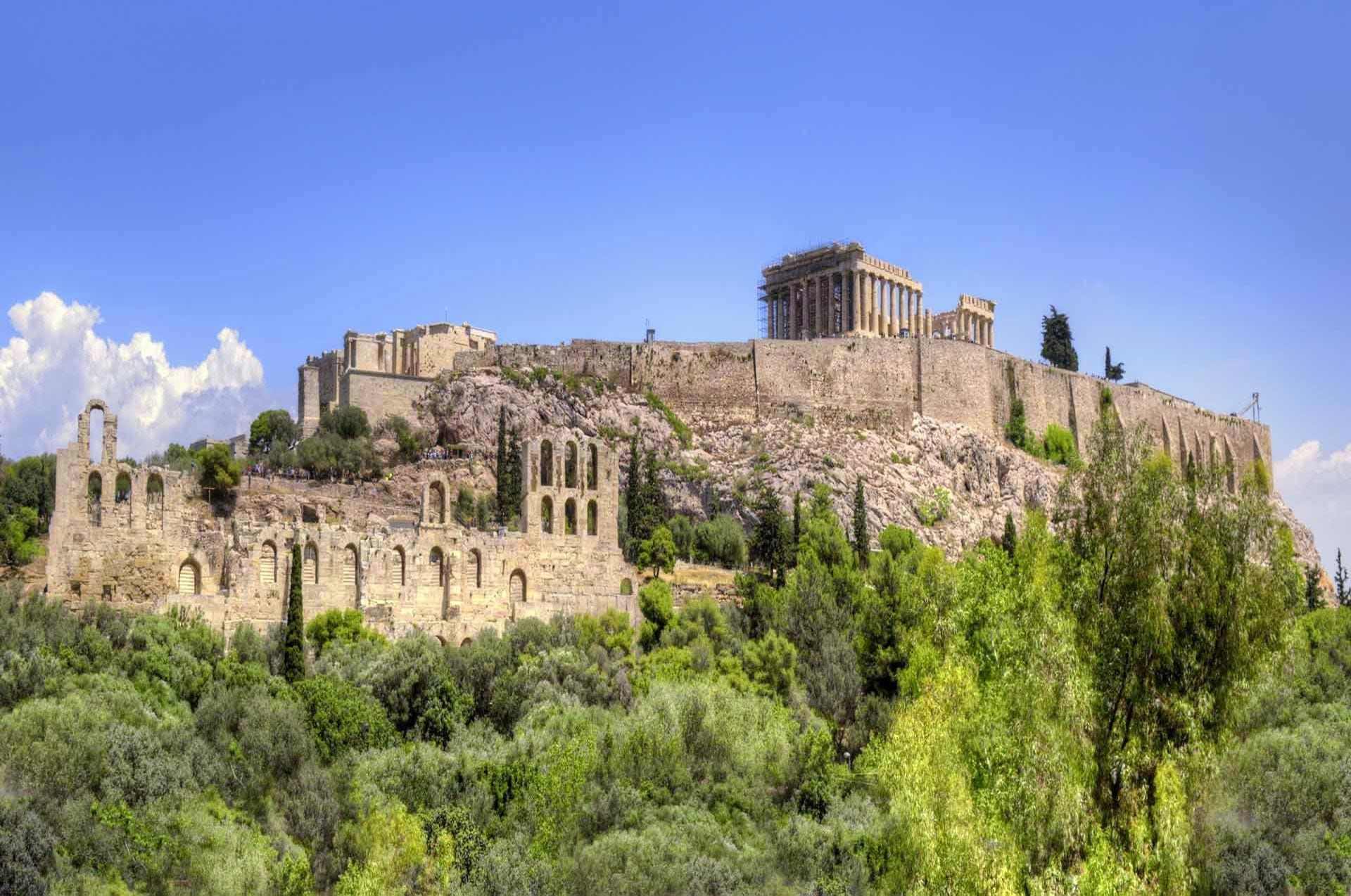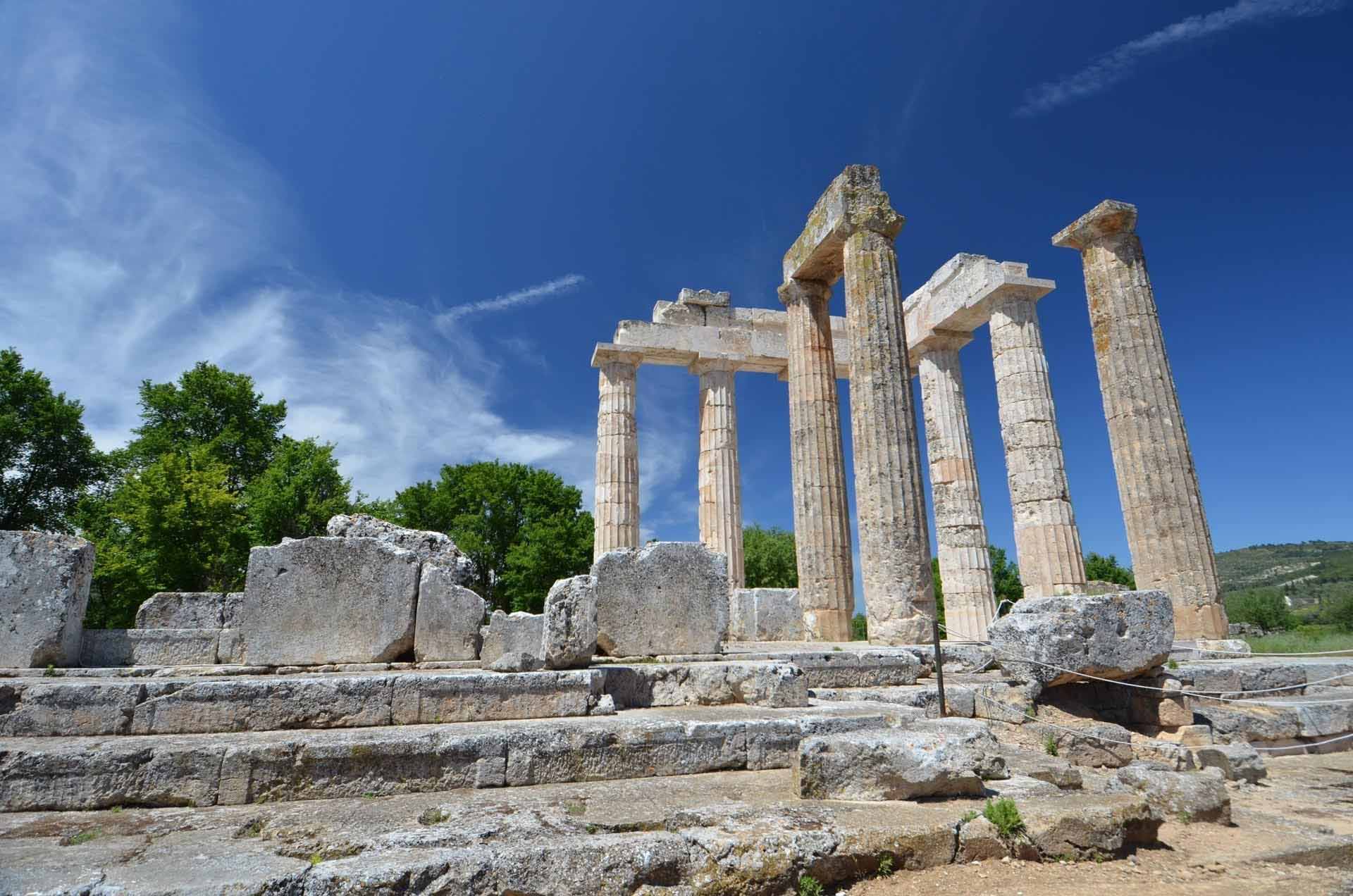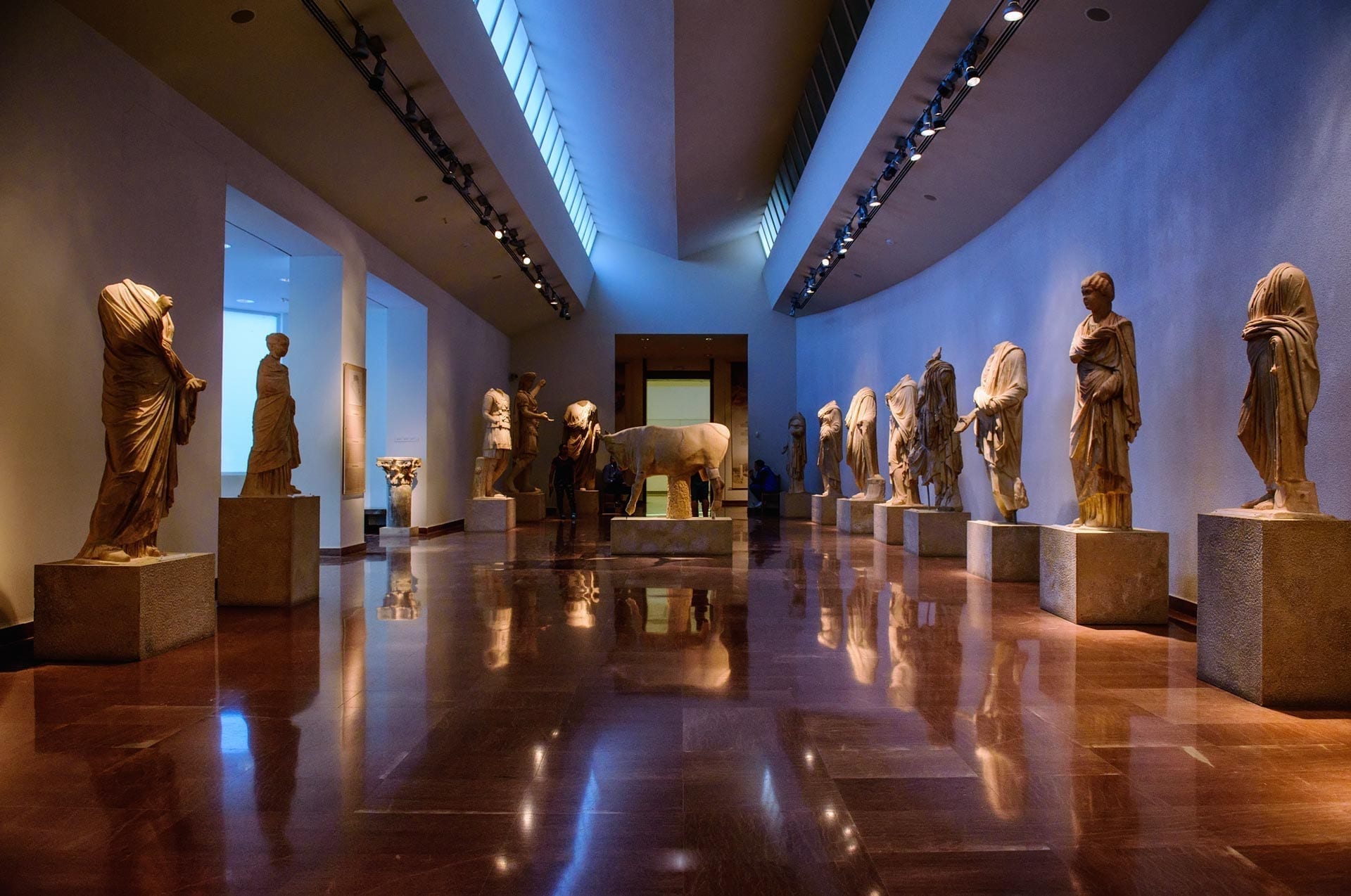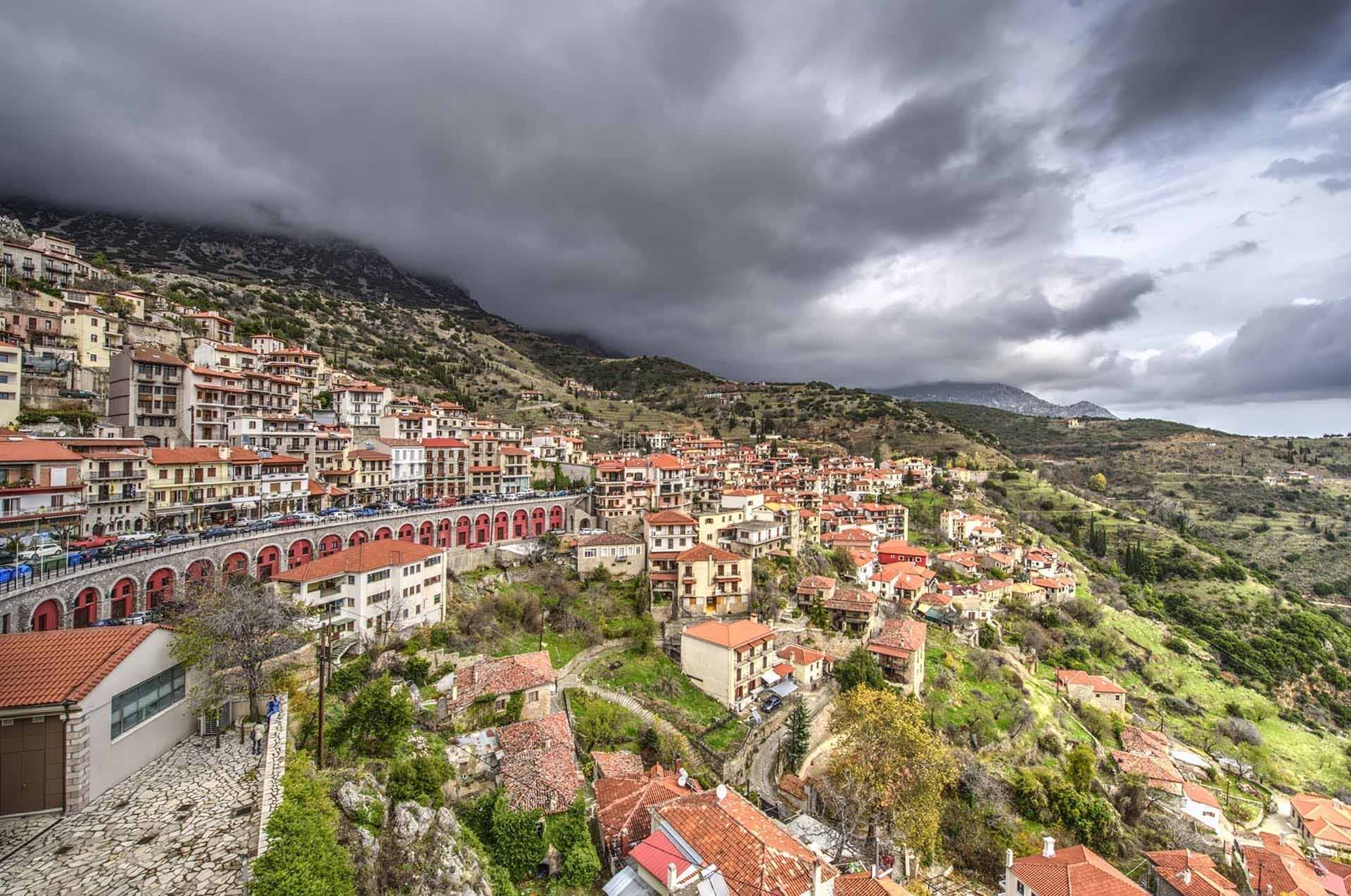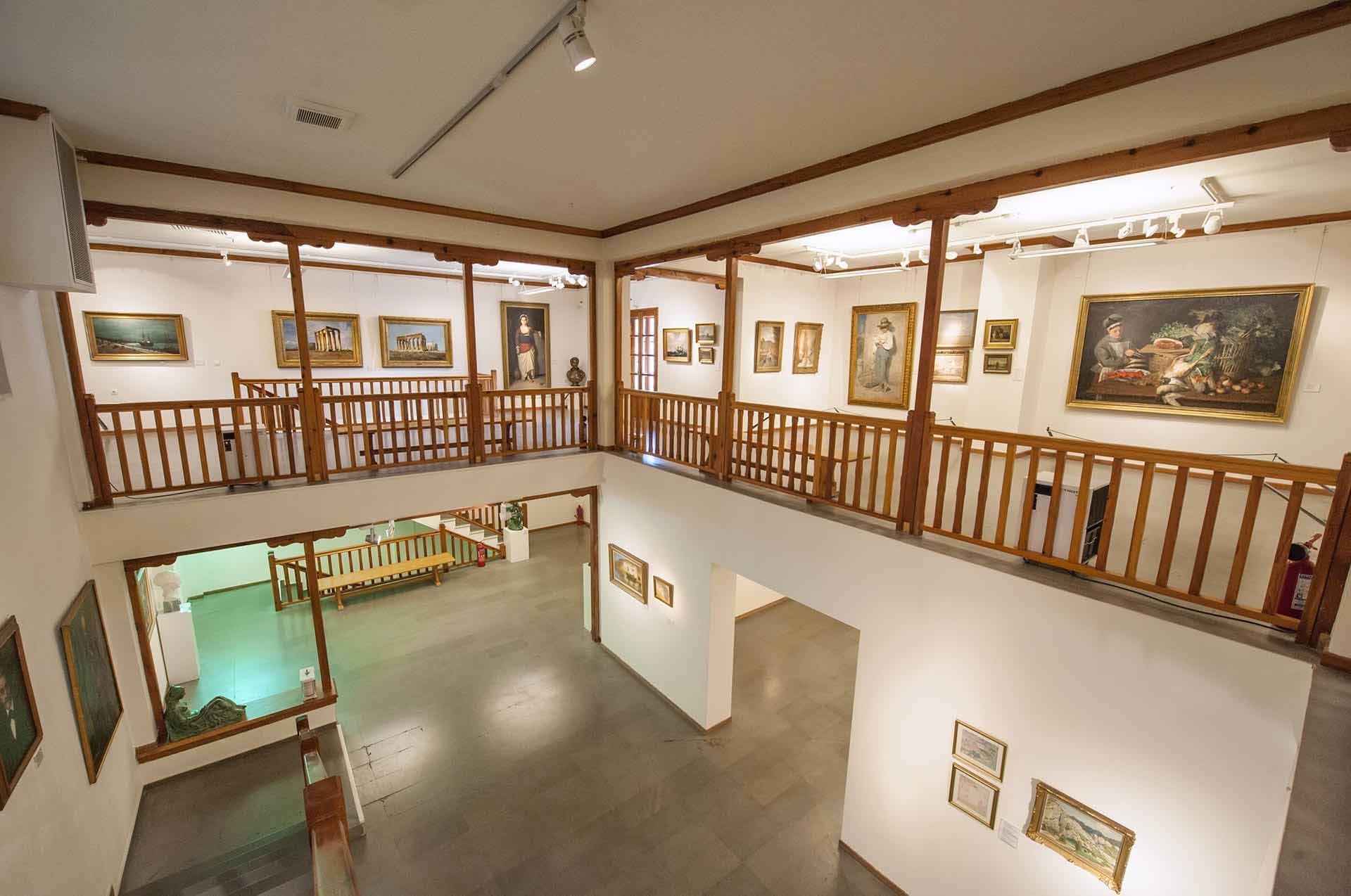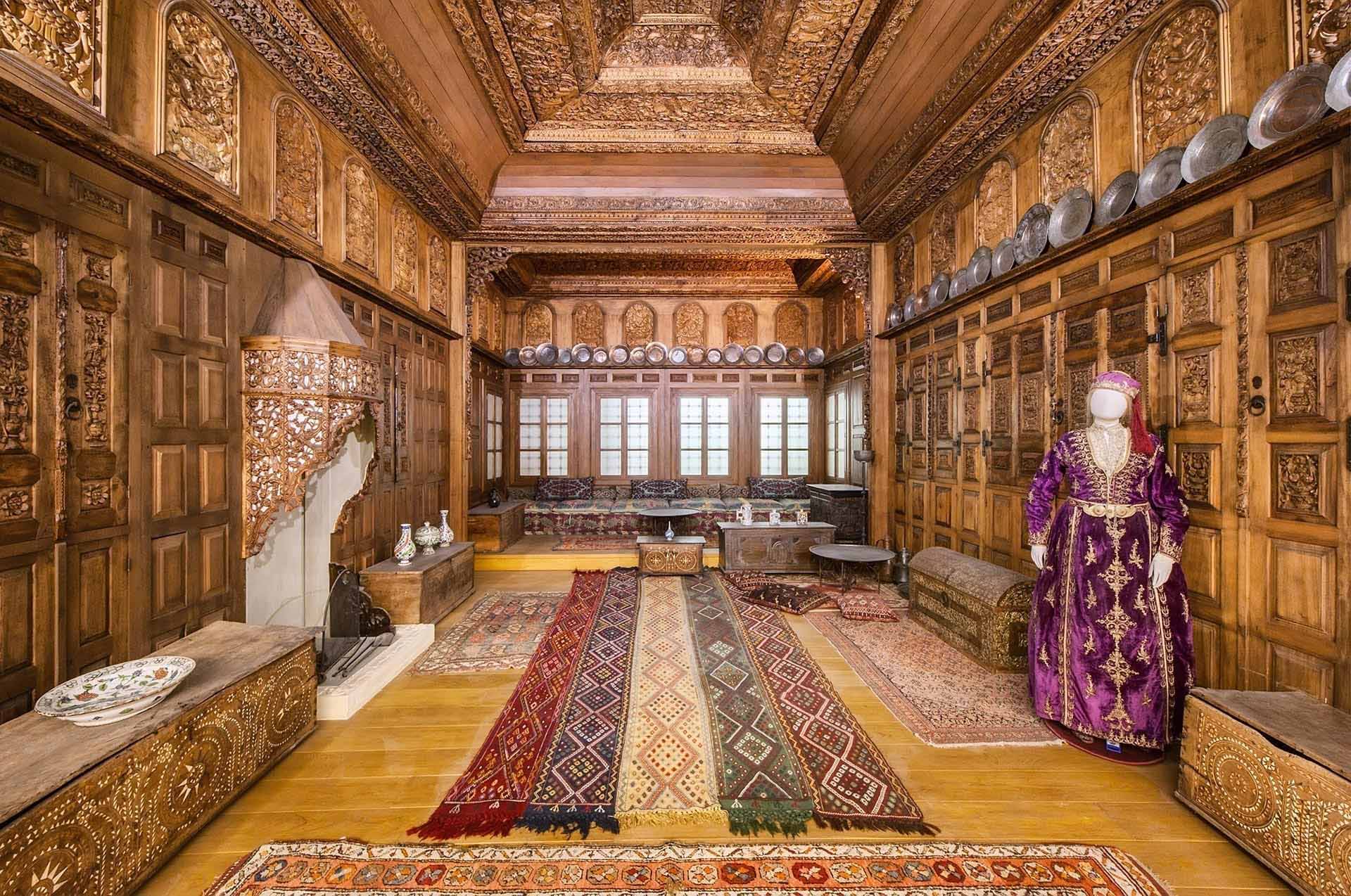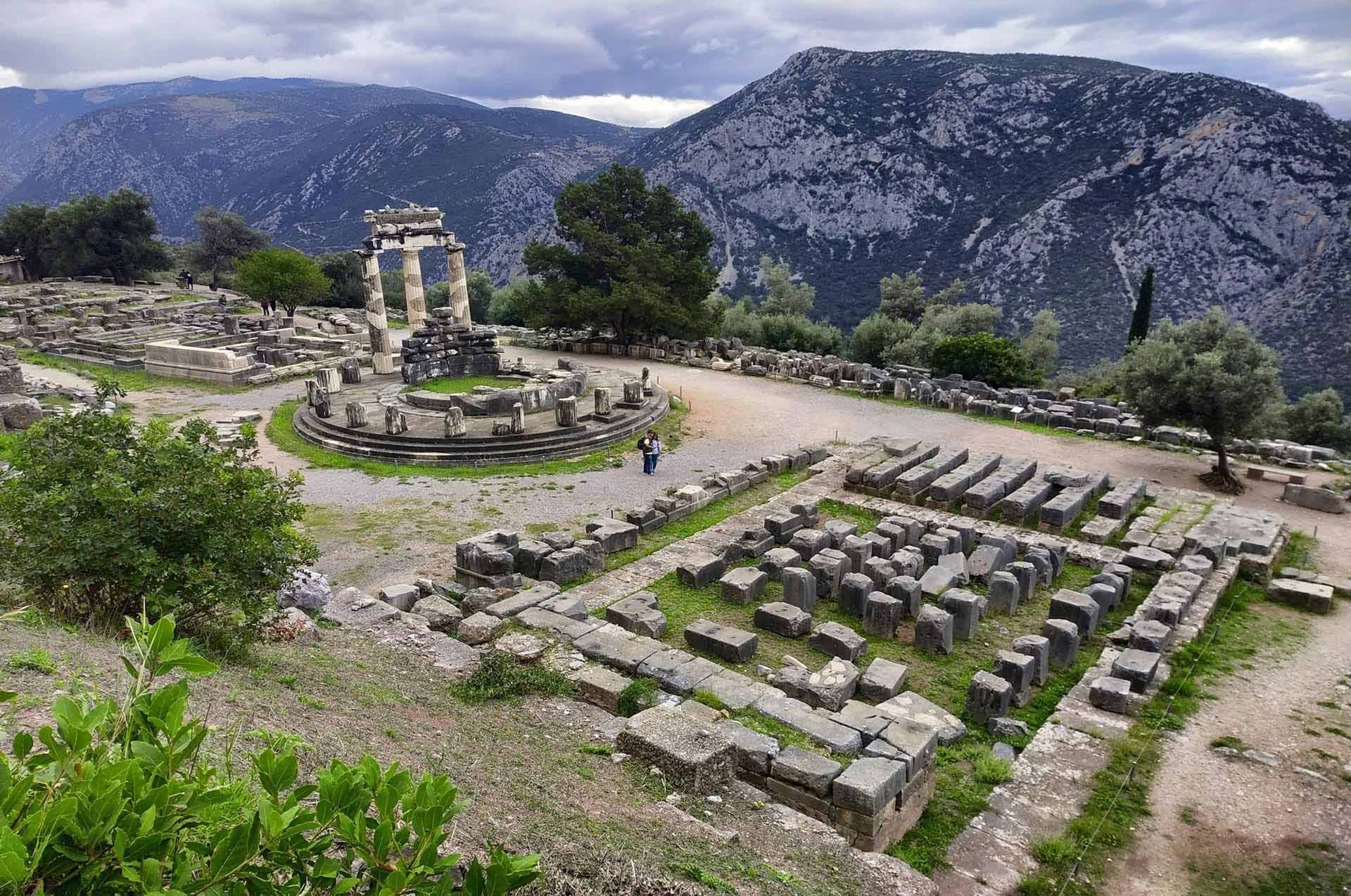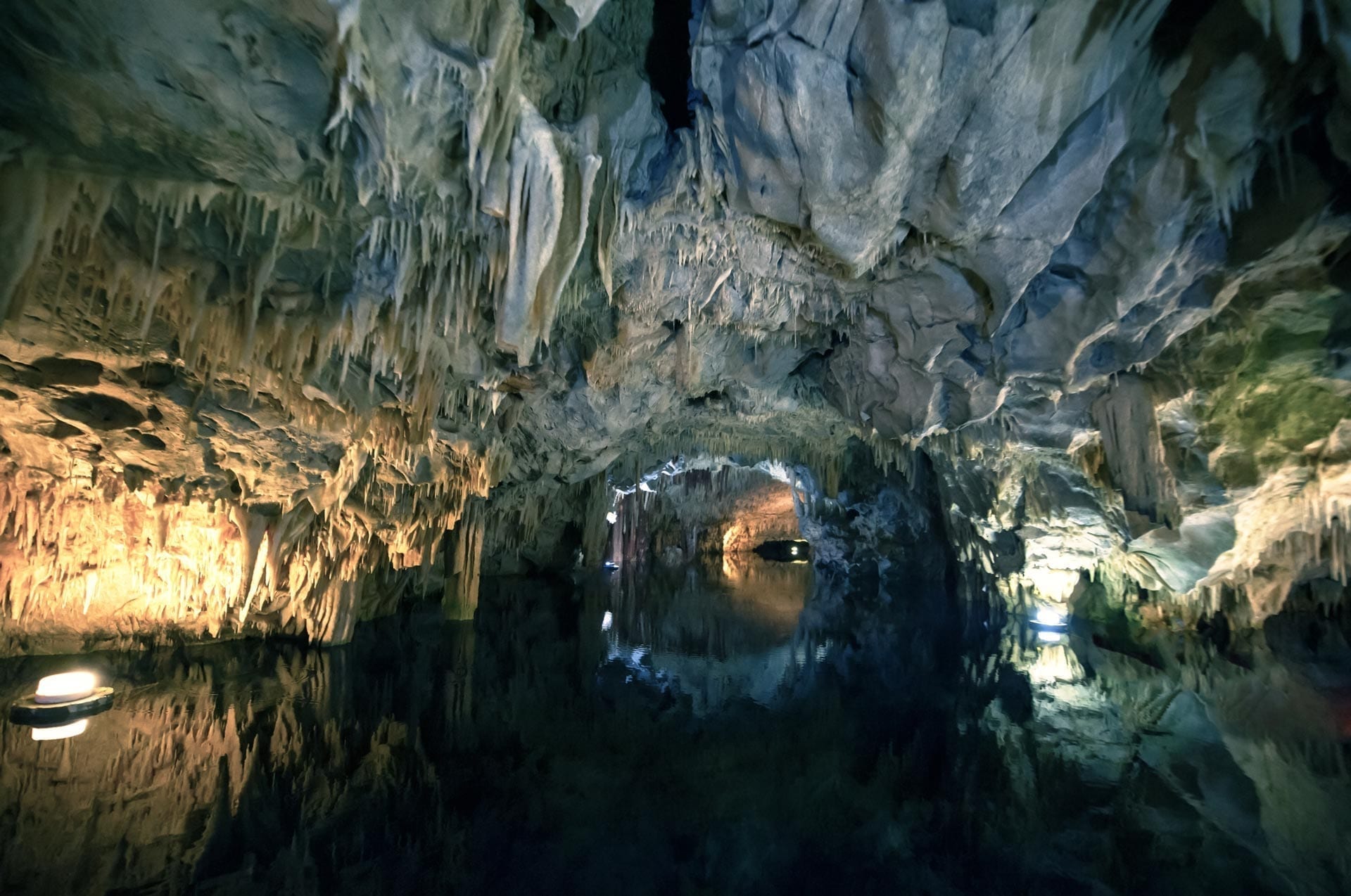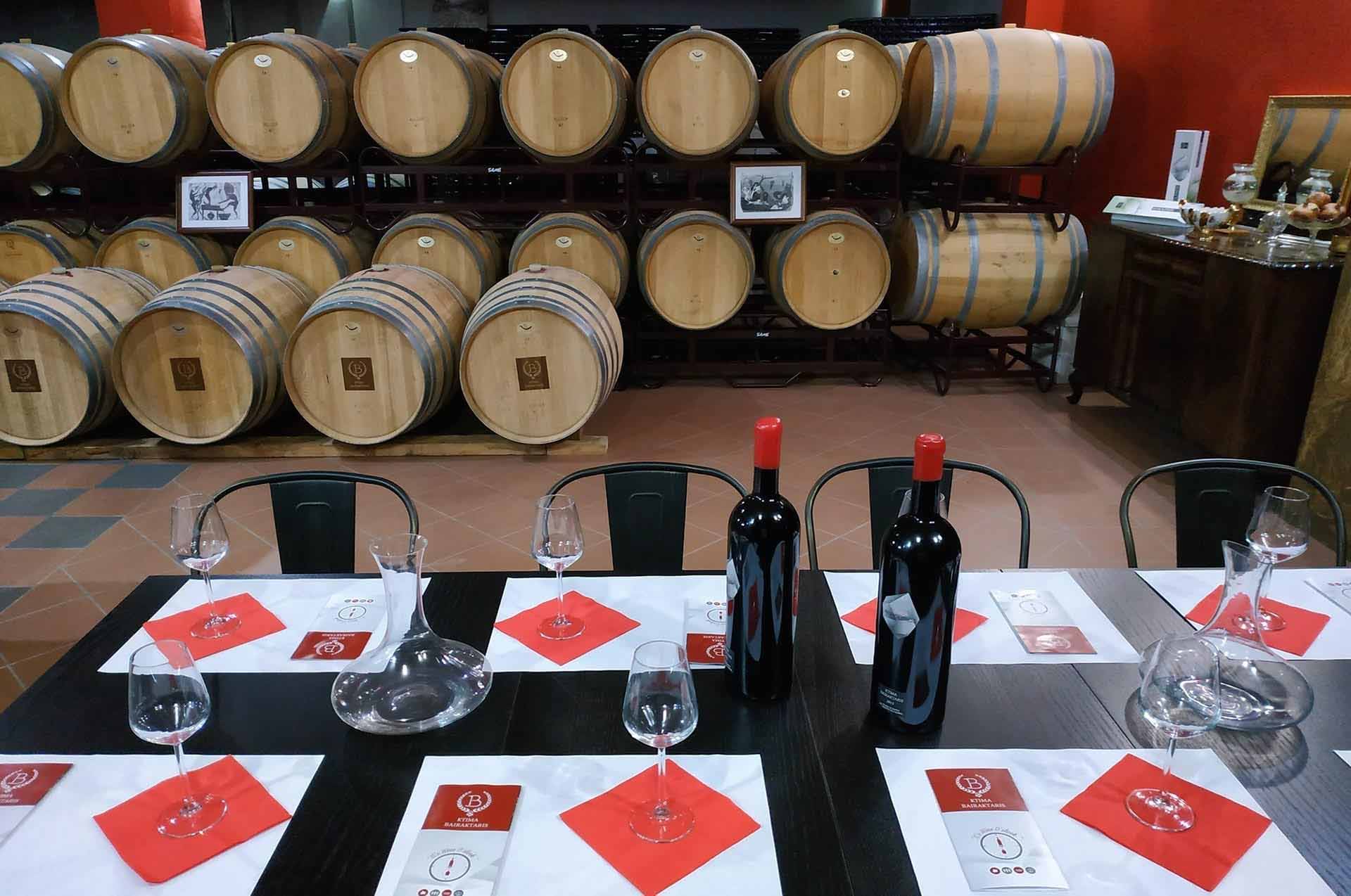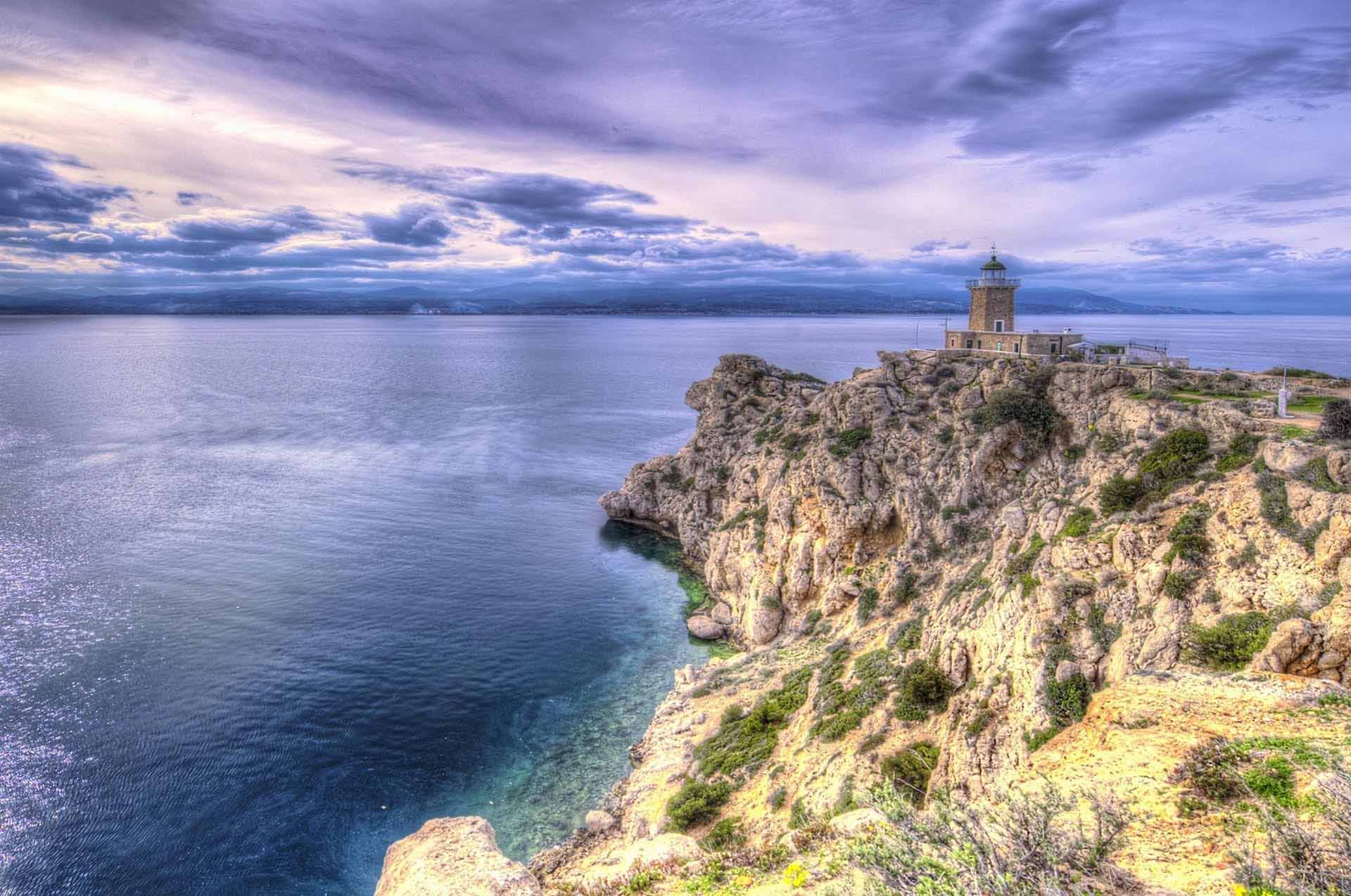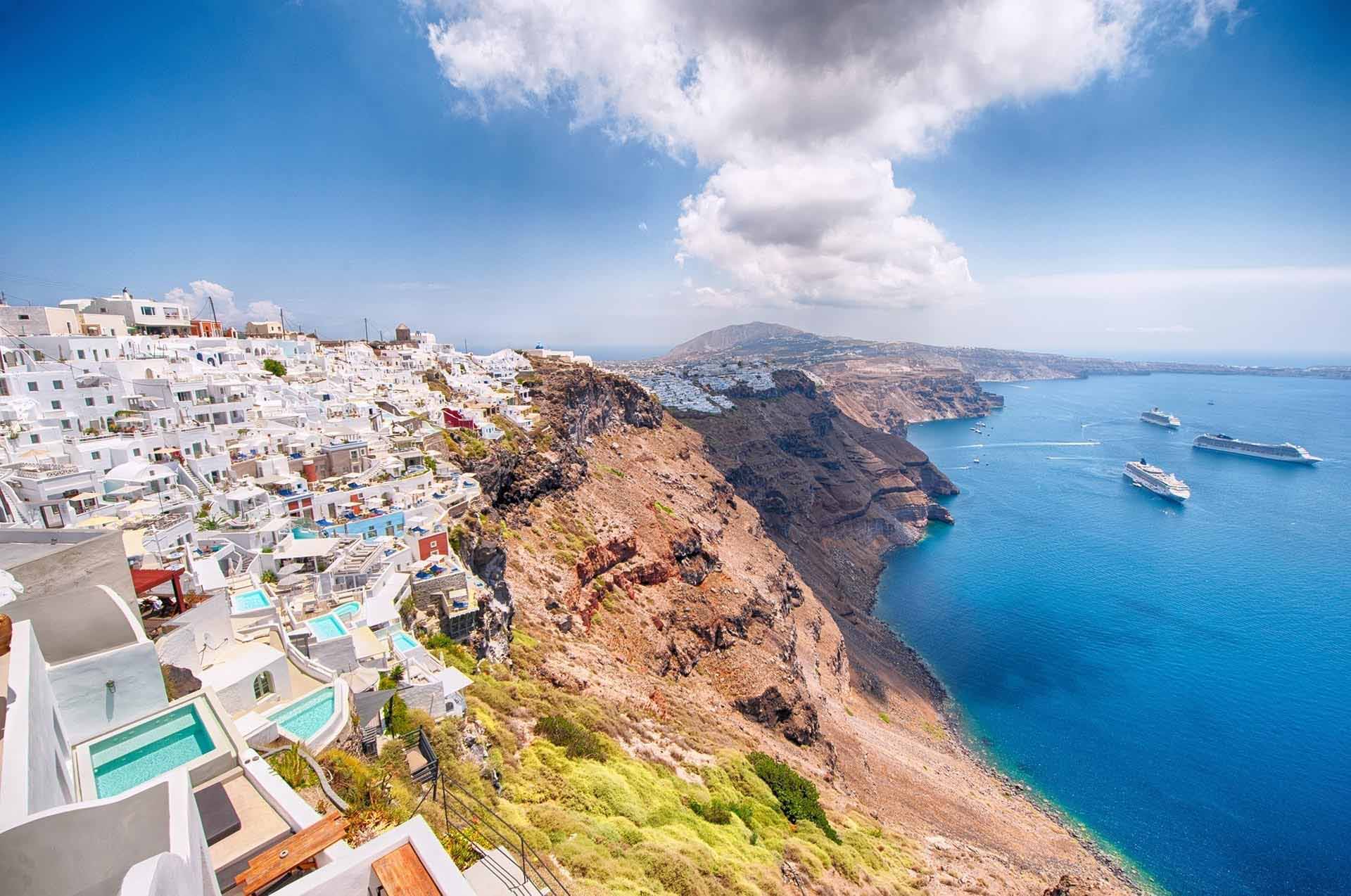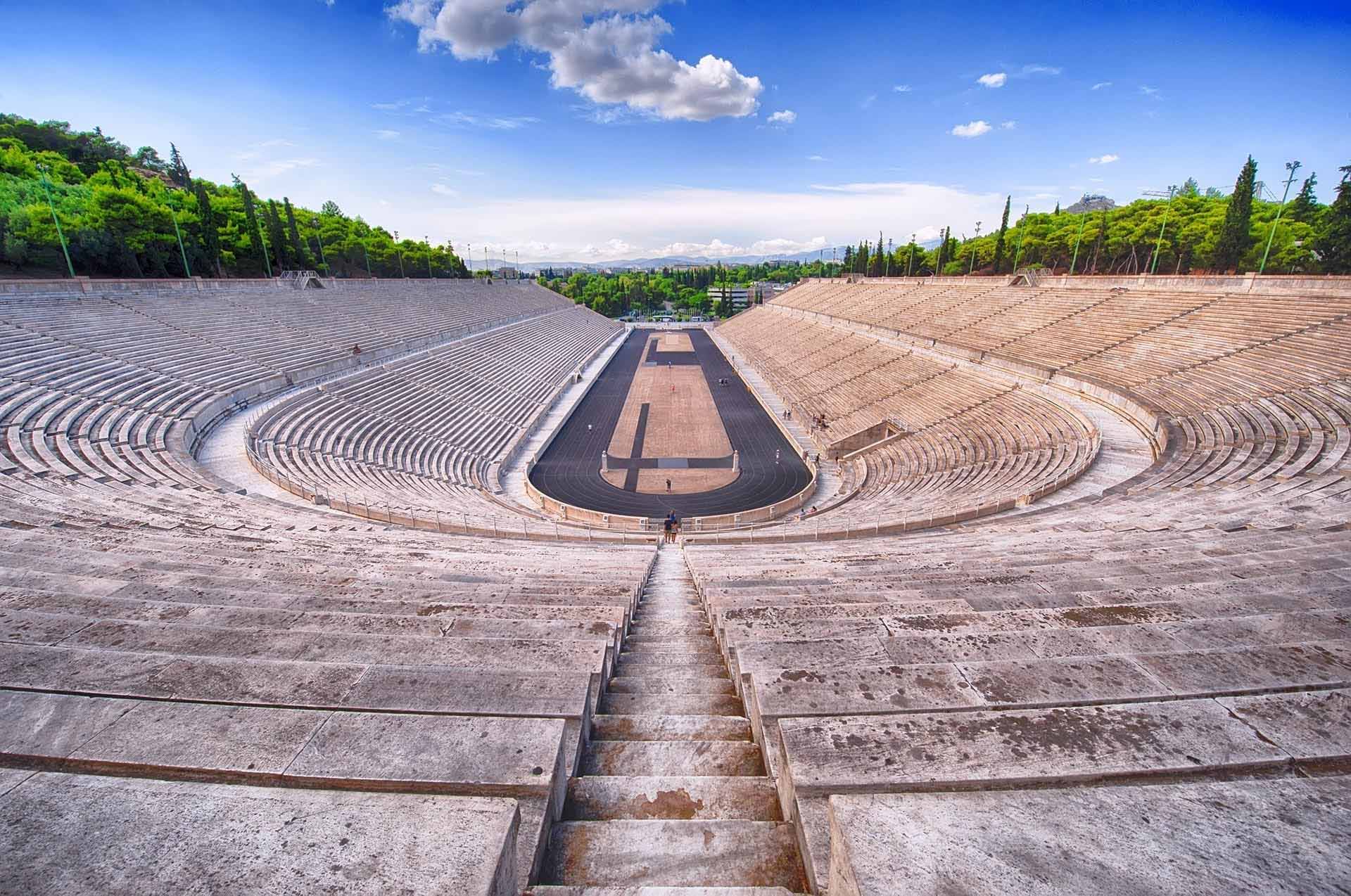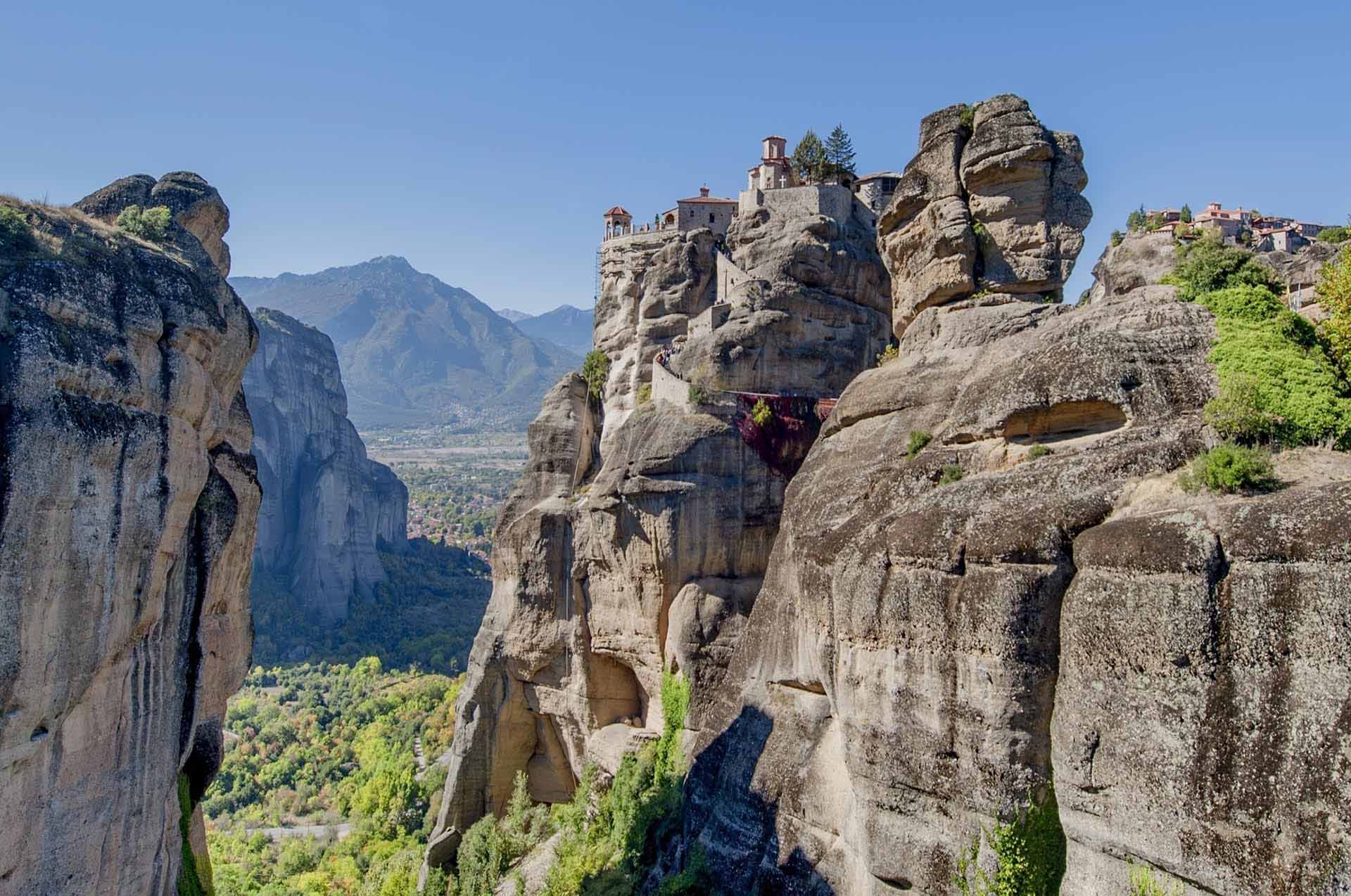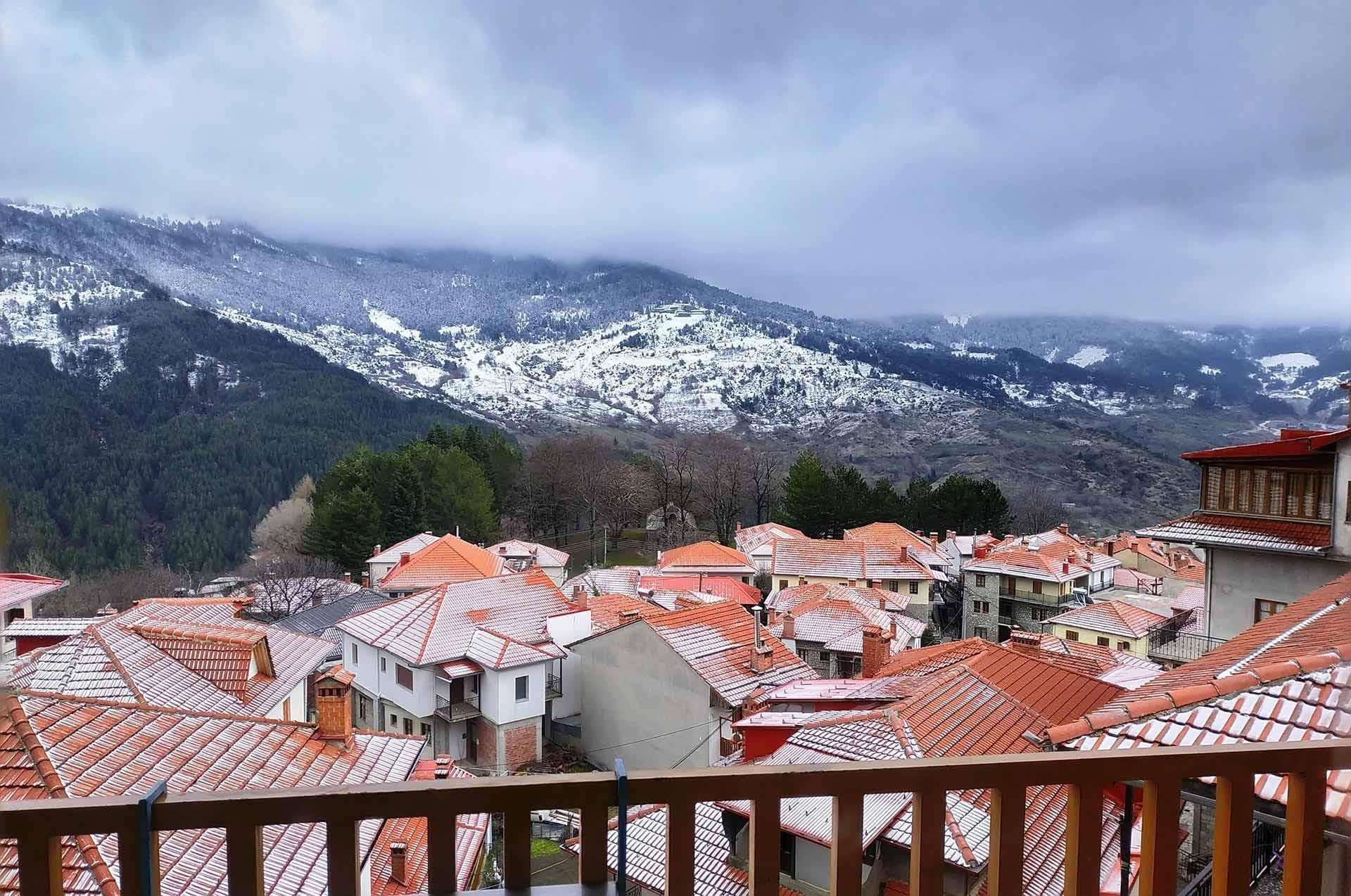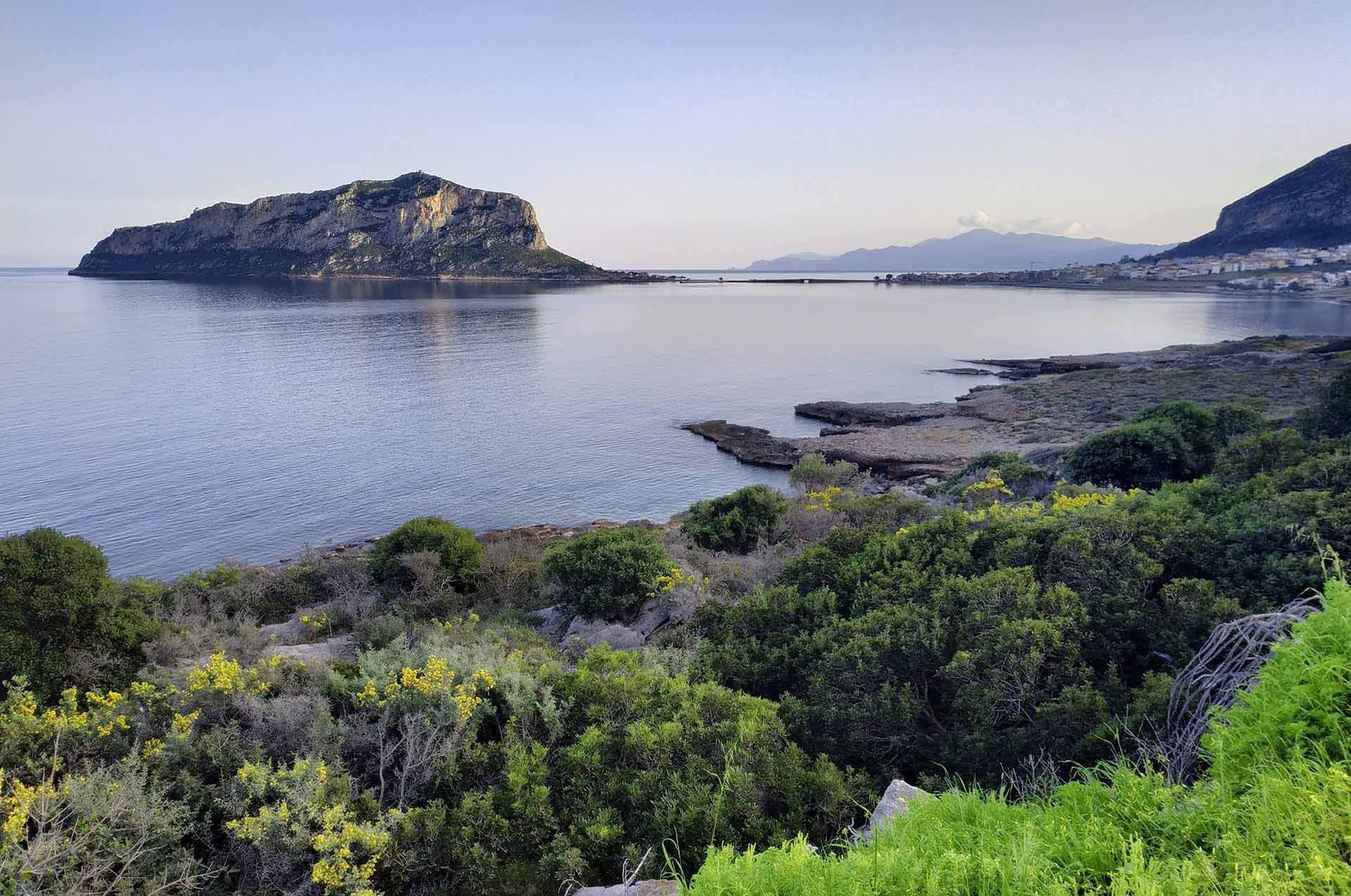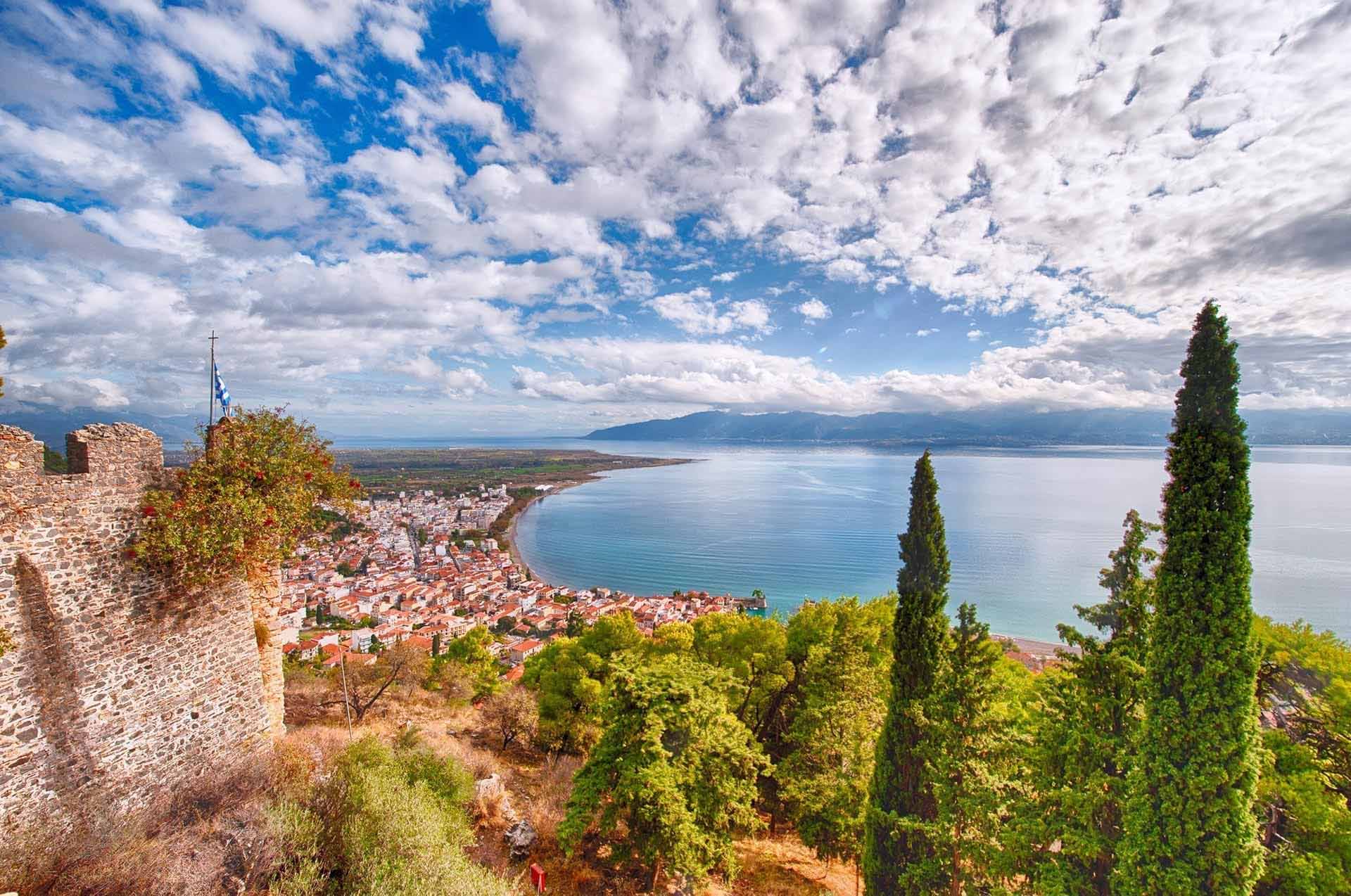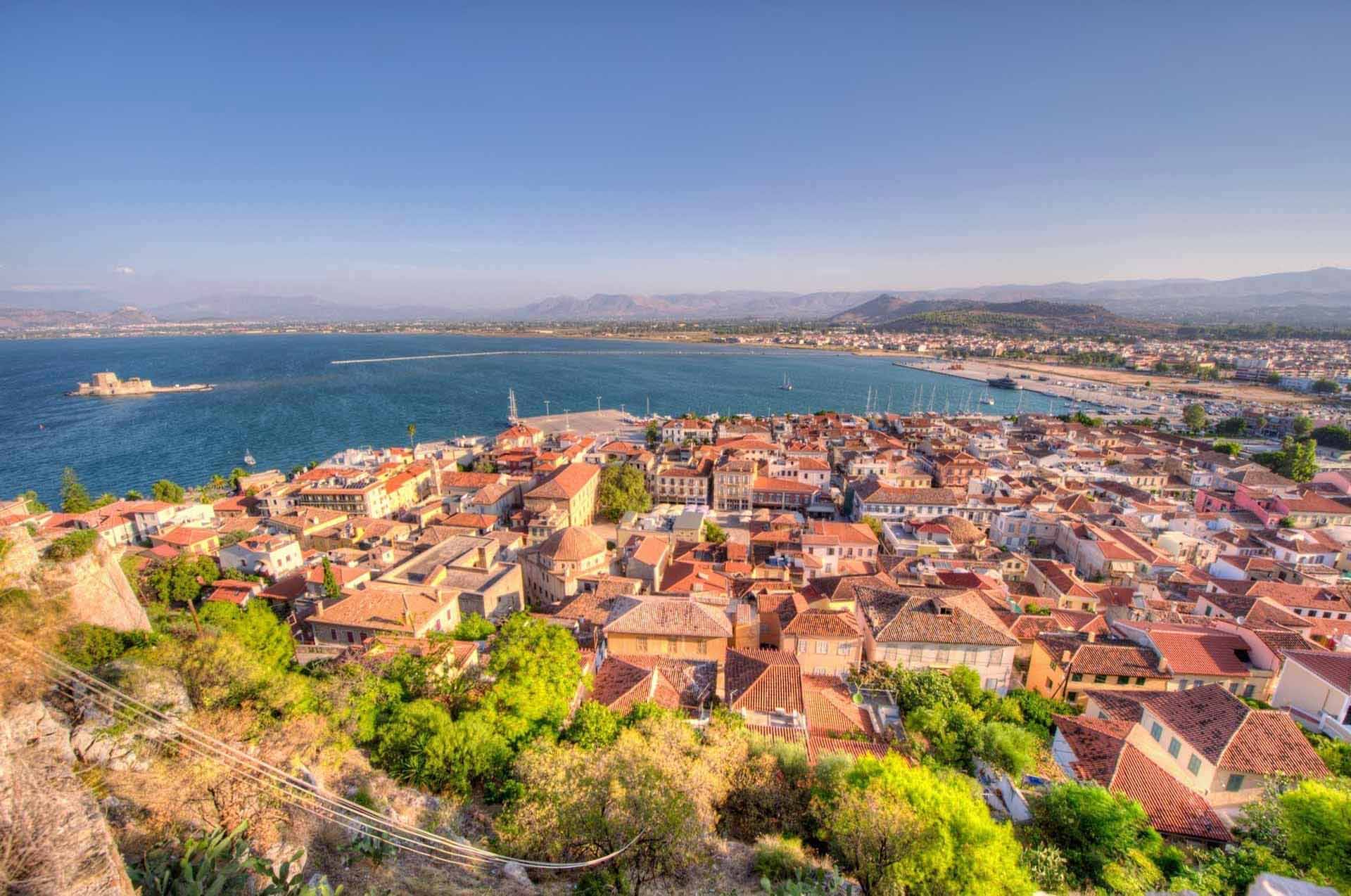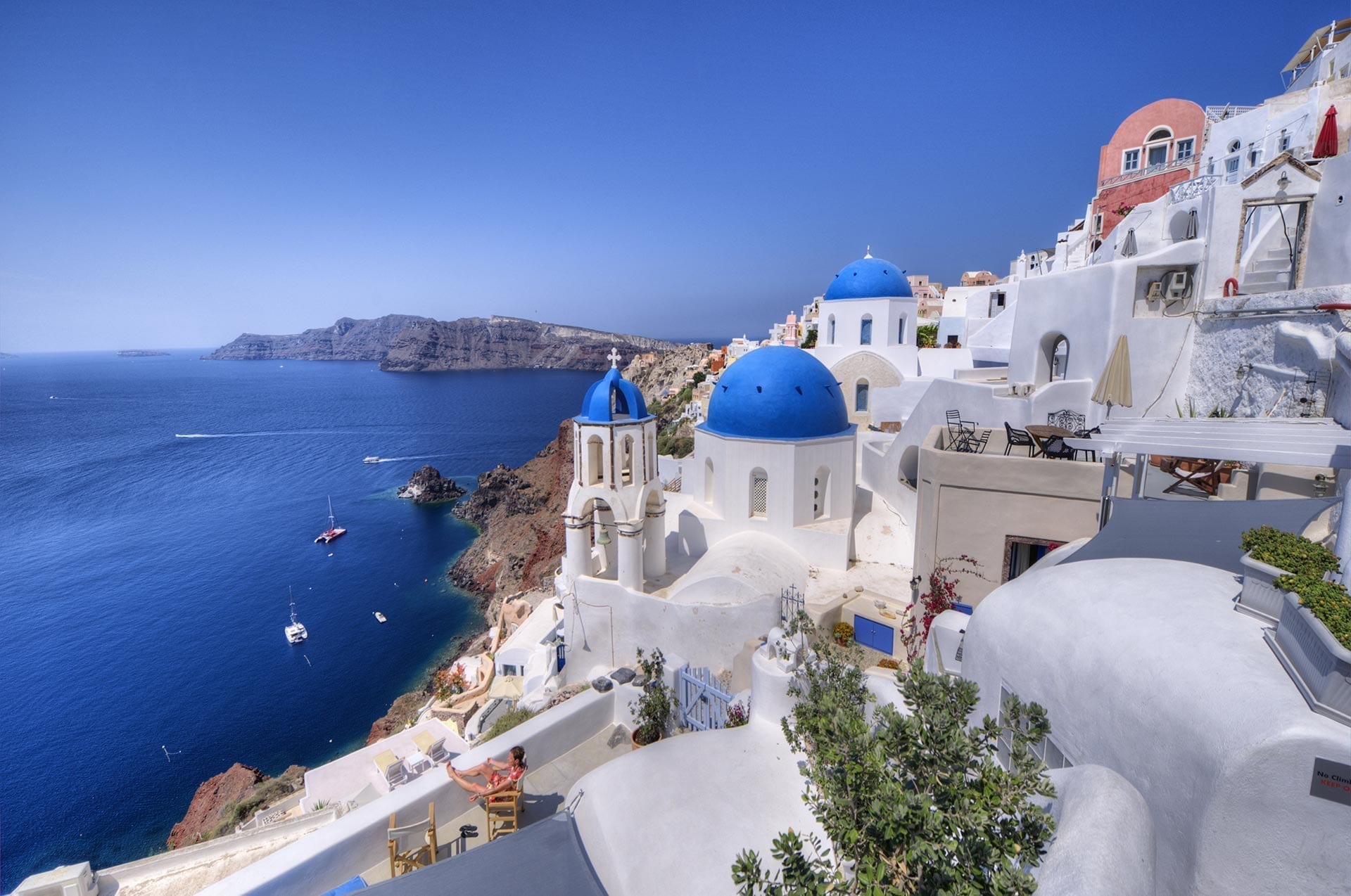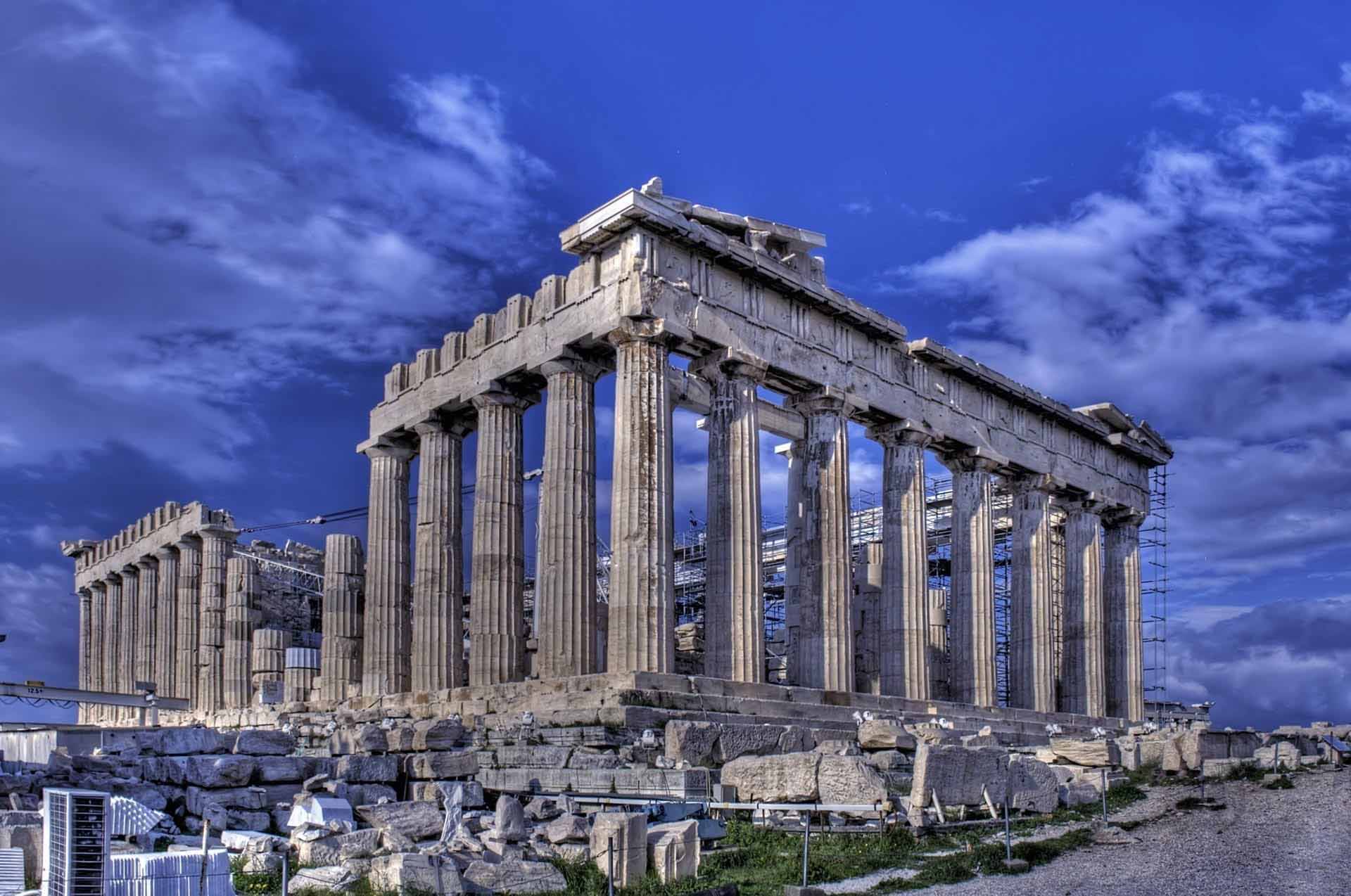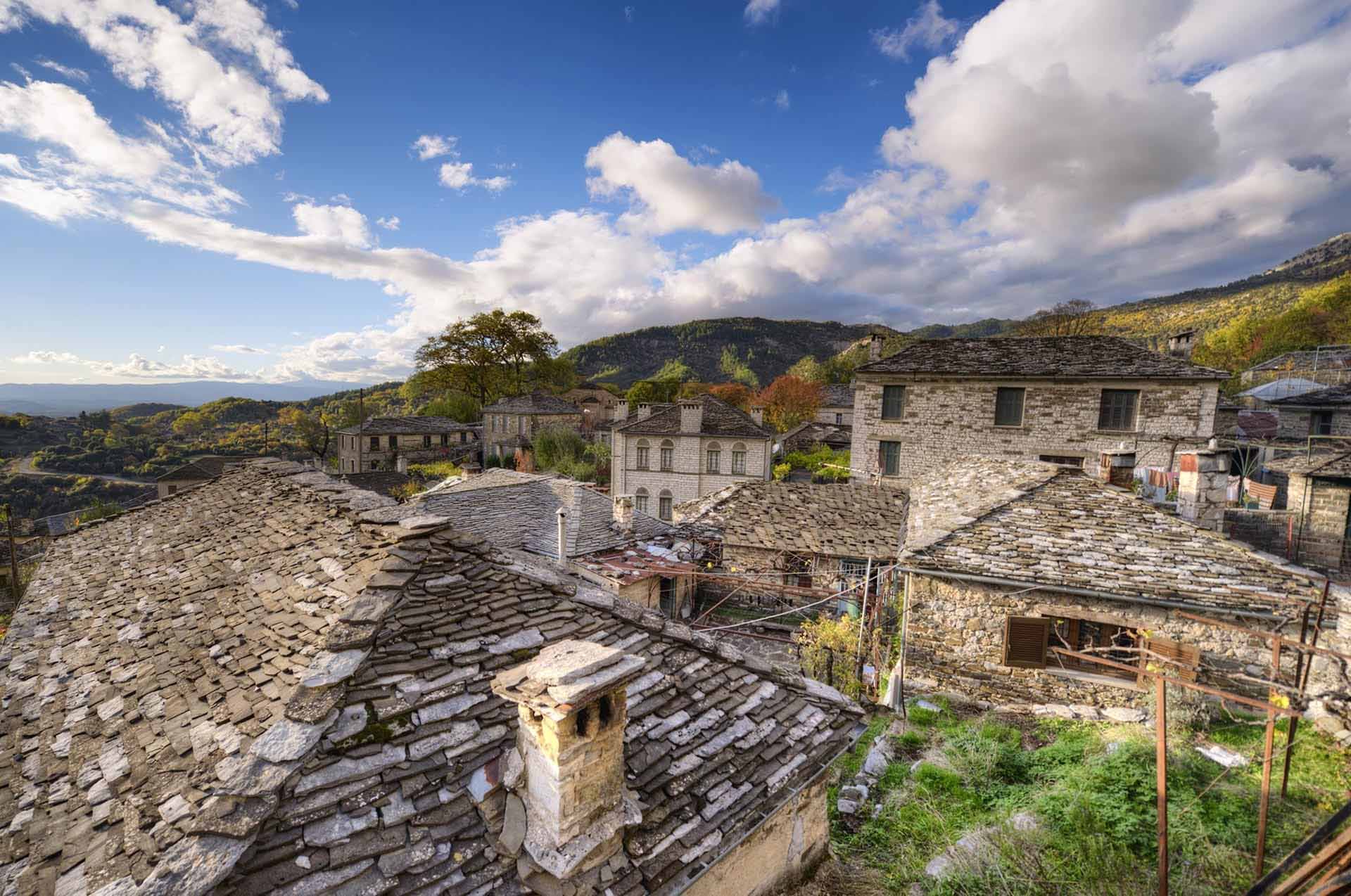This dazzling modernist museum at the foot of the Acropolis‘ southern slope showcases its surviving treasures still in Greek possession. While the collection covers the Archaic and Roman periods, the emphasis is on the Acropolis of the 5th century BC, considered the apotheosis of Greece’s artistic achievement. The museum cleverly reveals layers of history, floating over ruins with the Acropolis visible above, showing the masterpieces in context.
Designed by US-based architect Bernard Tschumi with Greek architect Michael Photiadis, the €130-million museum includes items formerly held in other museums or in storage, as well as pieces returned from foreign museums. As you enter the museum grounds, look through the plexiglass floor to see the ruins of an ancient Athenian neighborhood, which were artfully incorporated into the museum design after being uncovered during excavations.
Bathed in natural light, the 1st-floor Archaic Gallery is a veritable forest of statues, mostly votive offerings to Athena. These include stunning examples of 6th-century kore – statues of young women in draped clothing and elaborate braids, usually carrying a pomegranate, wreath, or bird. Most were recovered from a pit on the Acropolis, where the Athenians buried them after the Battle of Salamis.
Also on this floor are five Caryatids, the maiden columns that held up the Erechtheion (the sixth is still in the British Museum). The museum’s crowning glory is the top-floor Parthenon Gallery, a glass atrium housing the temple’s 160m-long frieze. It’s mounted as it once was, following the layout of the building, and you can stroll along, as though atop the columns, and examine the fragments at eye level. The frieze depicts the Panathenaic Procession, starting at the southwest corner of the temple, with two groups splitting off and meeting on the east side for the delivery of the peplos to Athena.

